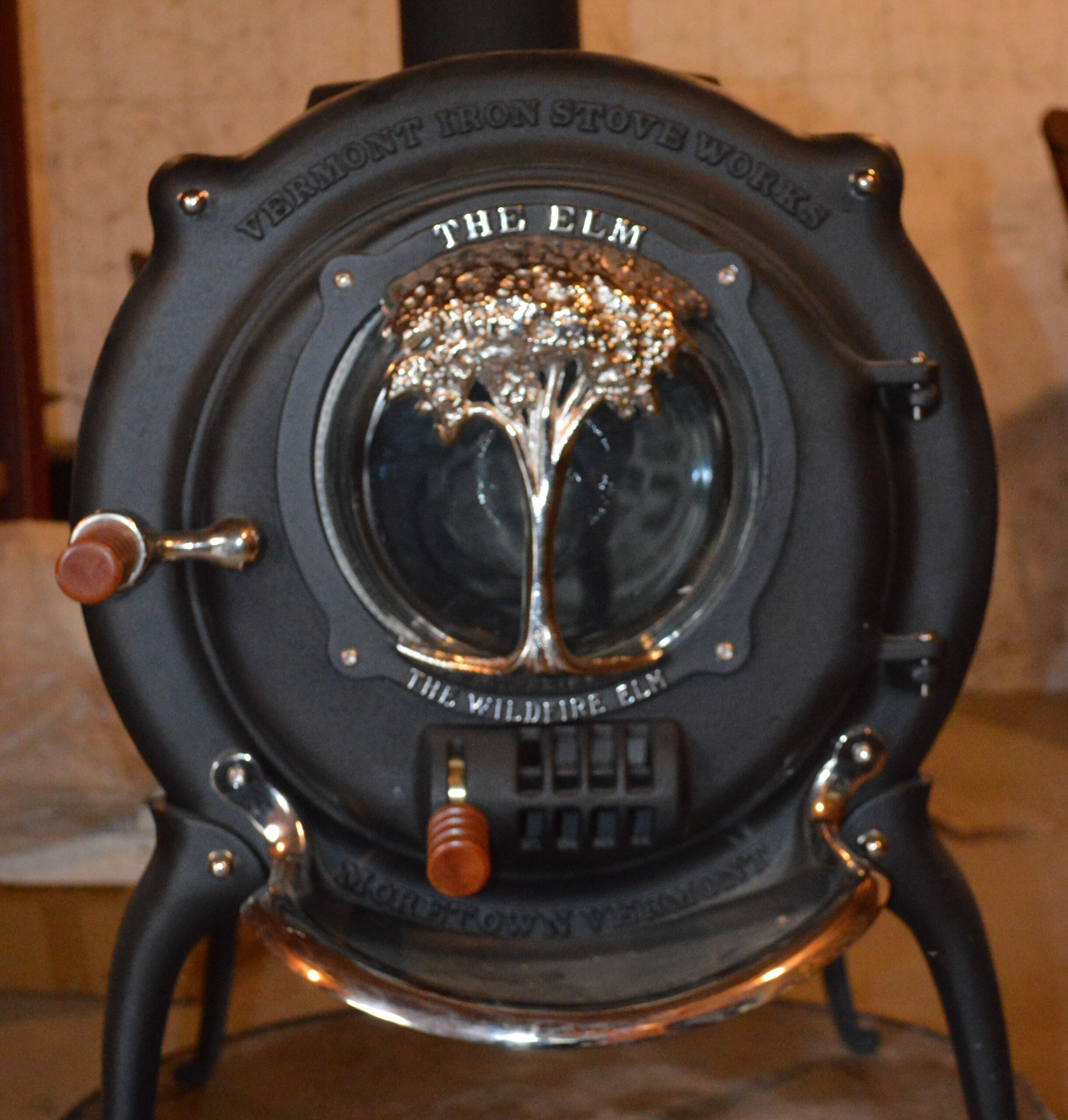THE ICONIC ELM STOVE
Here is a little history of the Elm stove.
Richard Travers (Trav) is the original creator, designer & patternmaker of the Elm stove and a founder of Vermont Iron Stove works.
Trav moved to Vermont in 1971 during the energy crisis. While looking for alternative heating solutions Trav, Duncan Syme & David Sellers began researching and buying older woodstoves to refurbish and learn more about wood stove operation.
All three decided to design a stove and choose a design they would focus on and manufacture. Duncan designed a Franklin styled air tight wood stove, Dave designed the Maple stove and Trav designed a six plate stove.
Duncan Syne partnered with his brother-in-law and businessman Murray Howell and Vermont Castings was formed.
That left Trav and Dave with the Maple stove and Vermont Iron Stove Works was founded.
David Sellers was very busy working as a professional architect and the Maple stove was left in Trav’s hands. A foundry in Massachusetts introduced Trav to a patternmaker and the first pattern for the Maple stove was created. The first patterns were designed for cope and drag molding.
A foundry in Barre, Vermont, Smith, Whitcomb and Cook, cast the base for the Maple stove. The Maple stove was very large and contained many parts and it seemed like a too complicated project for just himself. It was during this time the Elm Stove idea came to Trav and the design process began. In 1976 Trav made all the initial ten “match plate” patterns for the Elm stove with a patternmaker “holding my hand” at first . Trav started selling right away to a limited number of customers. In 1977 Steve Slatter presented a better printed Elm stove advertising brochure to Trav and was made a partner.
A few hundred stoves were produced in an old bobbin mill in Warren, VT before the company moved to Waterbury, Vermont in 1979, where they employed up to a dozen people for production. Almost ten thousand stoves were produced and sent to dealers and retail customers around the country over that first decade. The stove’s design was modified and improved by Trav over the years and things took a big leap forward with the introduction of the Catalytic Elm in 1982(?). To improve air quality in the US the EPA began to require woodstoves be tested to UL standards and the Elm was tested annually in the 1980’s. Park benches were also introduced to keep employees going during slow periods.
The woodstove industry went through a series of booms and busts as the number of US manufacturers soared to around 600, and sales spiked during the several energy crises of the late 70’s and 80’s and then rapidly decreased whenever the price of oil fell. In 1986 the business was sold to a dealer from Massachusetts that ran the business for a few years before closing. At this time Steve Slatter purchased the patterns and has kept the Elm stove owners with replacement parts since 2022. In the summer of 2022 we (Rich and Kathy Franklin) began the process of purchasing all of the original patterns for the Elm Stoves and any remaining parts that Steve had.We will continue to provide replacement parts, including glass, gaskets, and all other components of the Elm Stove that are produced from the original patterns. We look forward to meeting your needs for the Elm Stove.
